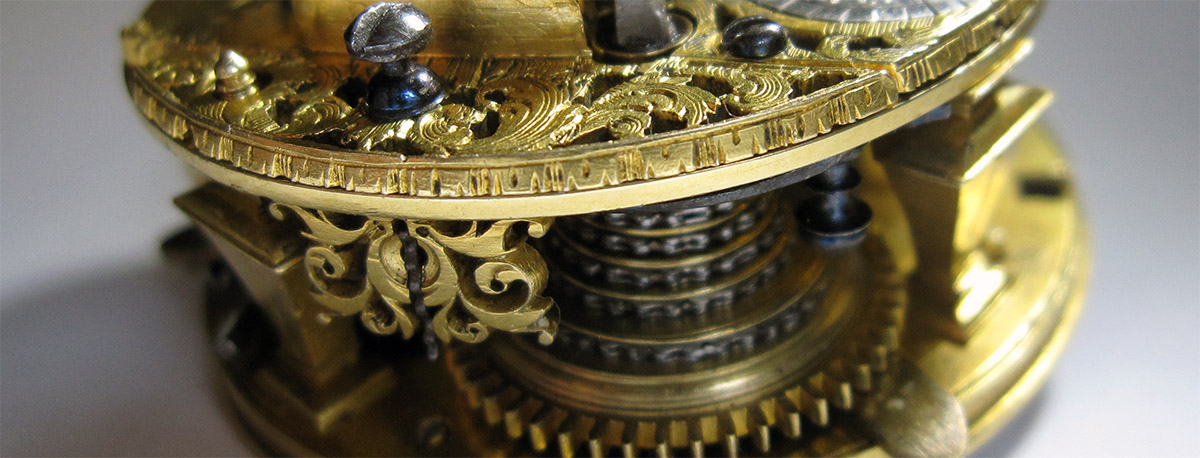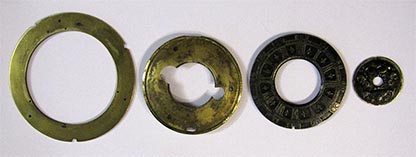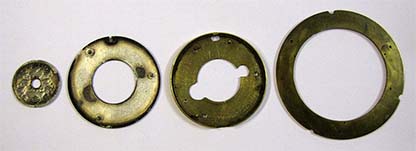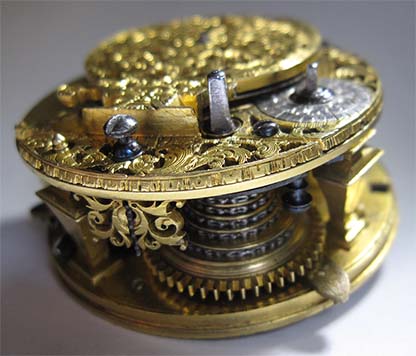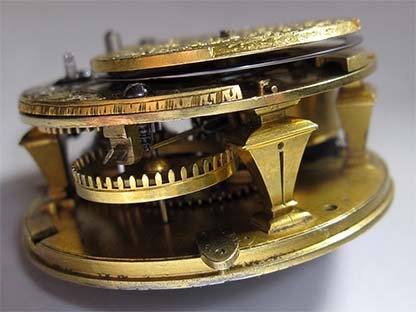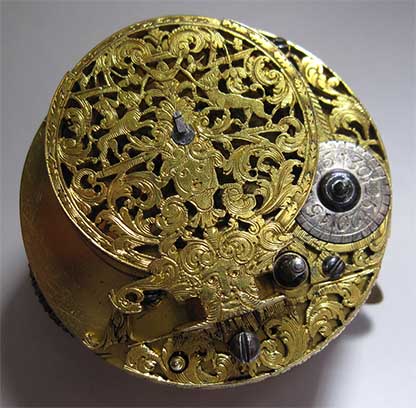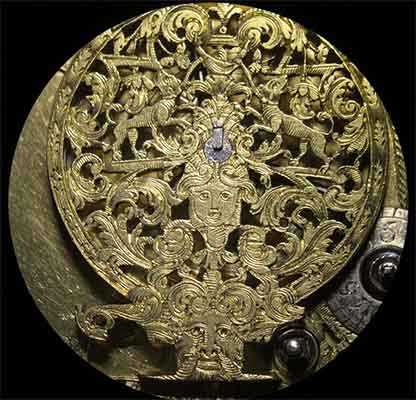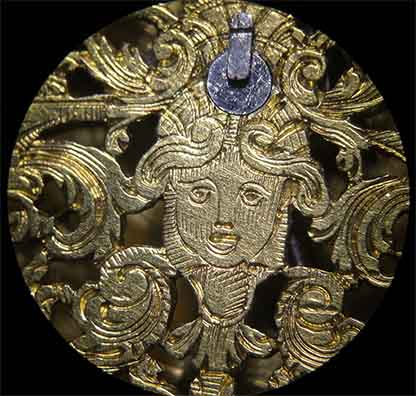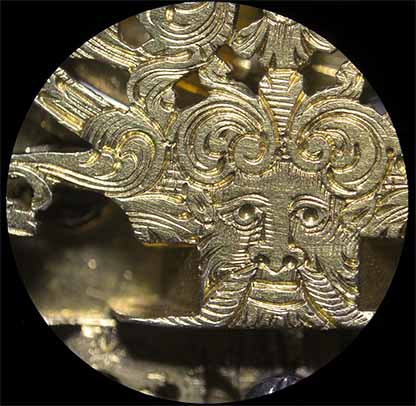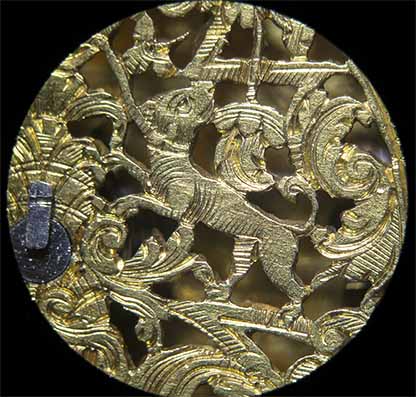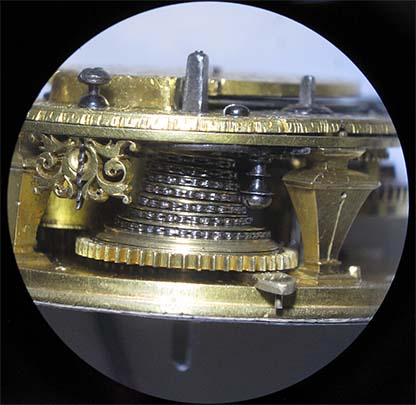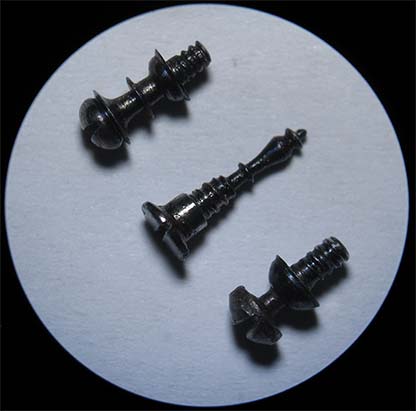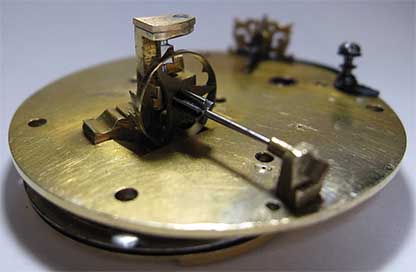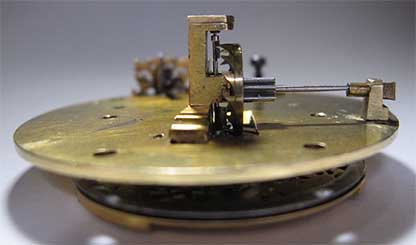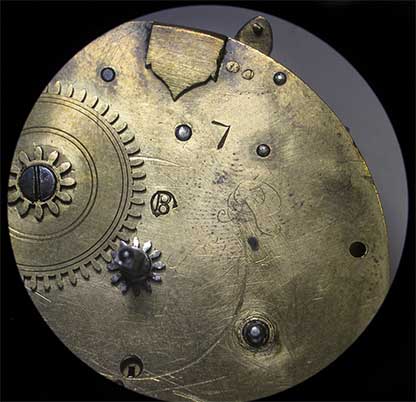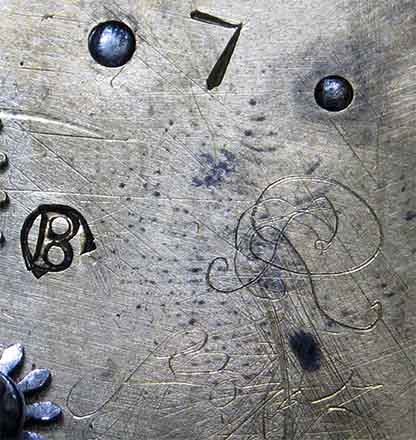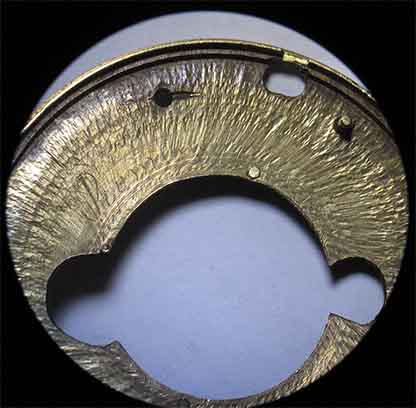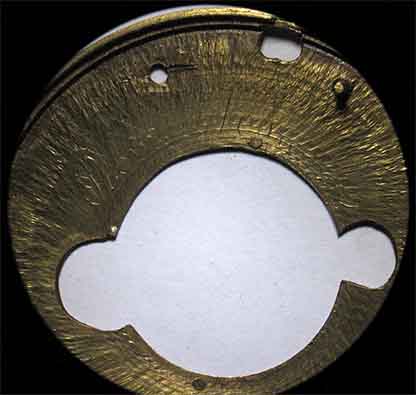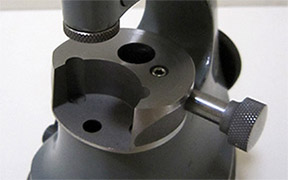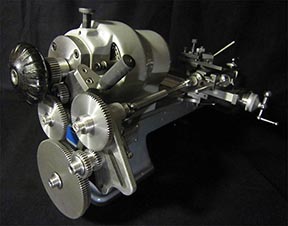You see a wonderful antique clock, their age is supposedly about 300 years. And, probably, this thing can be attributed to the subjects of museum interest.
Determine the age of these hours is not so easy. https://uhrforum.de/taschenuhr-wilkes-bilston-t60855
The watch case is made of wood. The door and sides along the entire perimeter are decorated with brass plates with vegetable inlay from stones and mother-of-pearl, and the remaining areas are covered with shellac. The upper narrowed, tent-like part is also decorated in brass with inlay. The figure of a lying lion crowns a fireplace clock . The height of the case is 26 cm. The curved legs, the decorative elements at the lateral butt joints, the arched element above the door are made of brass and gilded.
It seems that the clock case was made by the cabinetmaker separately, and not specifically for this mechanism, there are an objects that carry no function. And already the pocket watch mechanism is adapted to case of the bracket clock . This trend was widespread in France in the 18th century.
The case is decorated with inlay.
The mechanism has a verge escapement with a balance and a spiral, which is activated by a snail (fusee) and a chain.
Christiaan Huygens developed a balance spring watch and in 1675 patented a pocket watch. His watch employed a spiral balance spring. First the invention (verge escapement) was applied by his Parisian watchmaker Isaac Tyres. The inner end of the spiral is fixed on the balance axis, and the outer one is fixed on the platinum. Thanks to this system, the accuracy of the clock has improved, as a result of which, on the dial, a minute hand was added to the hour.
The verge escapement was used in pocket watches until the first third of the 19th century, on stationary clocks somewhere before 1860. (Comtoise-Uhren).
On the platinum is not engraved any numbers, there is only an imprint of "B" and a pair of illegible signatures left by the watchmakers. Also there is a signature on the back of the dial «Romershausen»
Clock inspection and the definition of a repair strategy
I received the clock in disassembled form.
In the mechanism, basically, everything is genuine, only in a few places one of the watchmakers left its mark after repair. The gilding has survived well, there is some surface rust. The details of the clock are executed quite qualitatively. Restore this artifact makes sense, because the clock still has a historical value.
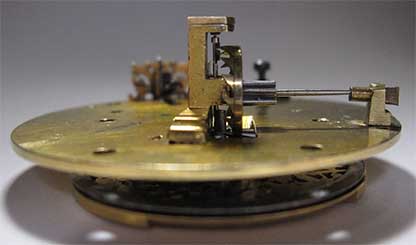
The following repairs are required:
- the balance axis is damaged: the lower pivot is broken off, the pallets on a axle have wear marks after long use
- the hook is broken on the fusee chain
- a pivot is broken on the additional pinion
For the repair of such watches you need a professionally thought-out concept and time.
Manufacturing of balance axis
30 hours
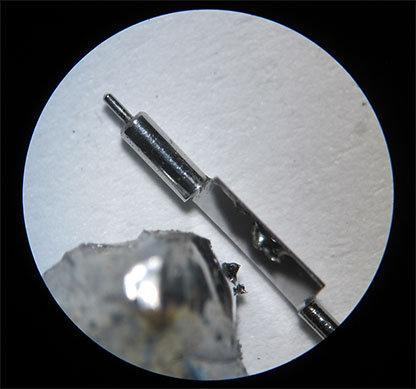
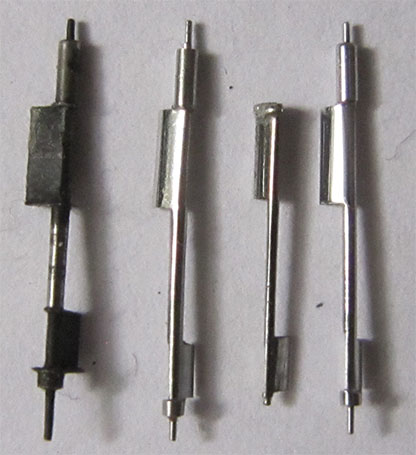
Unfortunately, the dimensions of the axis are completely difficult to determine. The original was in repair. Balance bridge is somehow pressed down, so the distance between the ends of the pivots is definitely not measured. The balance axis was broken, it was tried to solder, as a result, the bushing on the balance was smeared with tin. First of all, I determined those dimensions, which, in my estimation, remained untouched and unchanged, without any traces of repair. Then I measured the missing dimensions by eye. I made wider pallets on the balance axis. I had to determine the distance between the pivots by different calculations. Accurate performance of this work is the basis of success for other steps. Therefore, it is better to immediately spend more time.
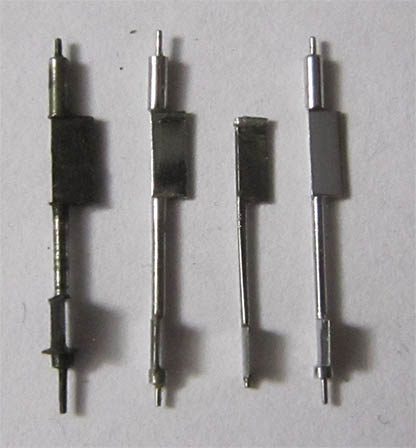
First I made a trial axis, and at the same time I set the dimensions on the milling machine. It took 10 hours for work. Having slightly straightened the balance bridge, I had determine that the axis is about 0.25 mm longer. I changed the dimensions in the drawing. The original can not be measure, but visually the thickness is 0.5 mm. I made the axis on the side of the balance a little thicker, 0.8 mm. To remove the excess better after. I also made the axis in the lower part Ø 0.8 mm. I increased the height of the lower pivot to 0.9 mm.
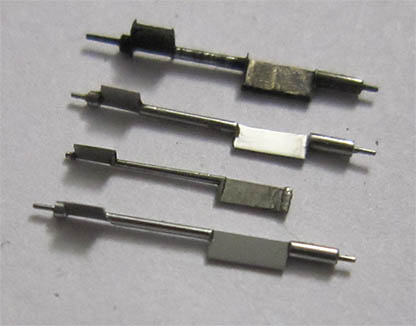
Having gained some experience, I began to make a new axis. Still, work is work, and there can always be something unforeseen, and you need to be ready then to change strategy.
Sequence of manufacturing:
- material: tool steel with a diameter of 2.6 mm
- made a shaft with a pivot on a lathe
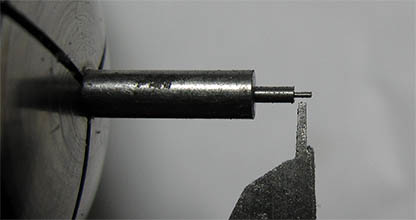
- Ø pivot 0,27 mm, finally 0.25 mm
- Ø shaft 0,8 mm
- total lenth 3,0 mm
- all the surfaces were polished with a rollierfile (rollierfeile)
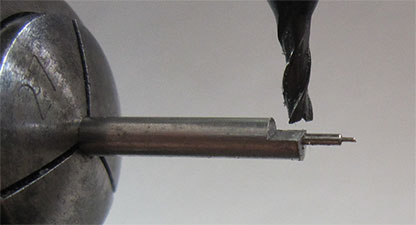
- first I milled a long pallet on a milling machine
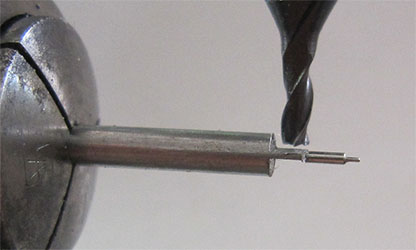
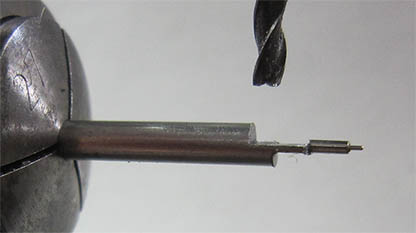
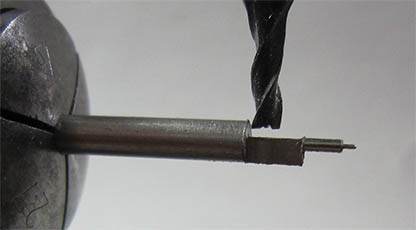
- I roughly milled the shaft along the circumference to 0.6 mm and a length 6 mm
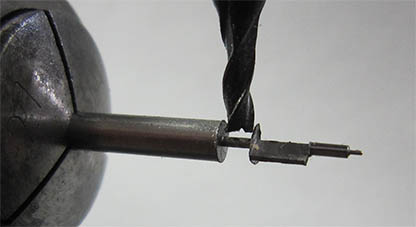
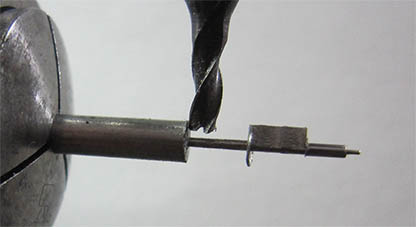
- I milled a short pallet on a milling machine
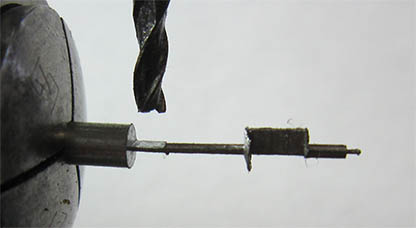
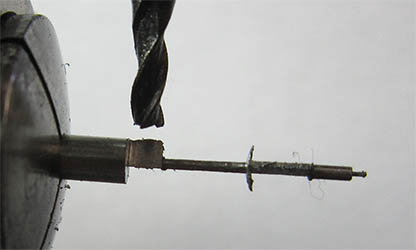
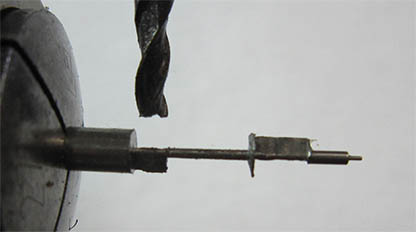
- I roughly milled the shaft
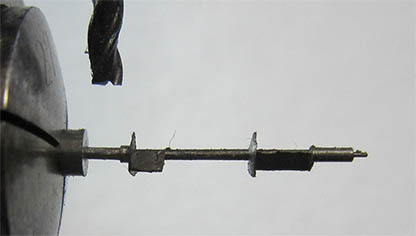
- I made a shaft with a pivot on a lathe
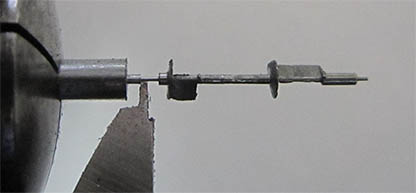
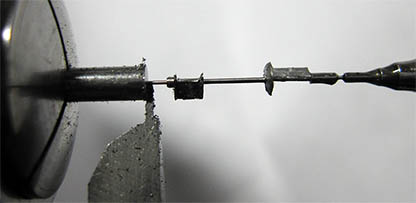
- I separated axis
This work took about an hour.
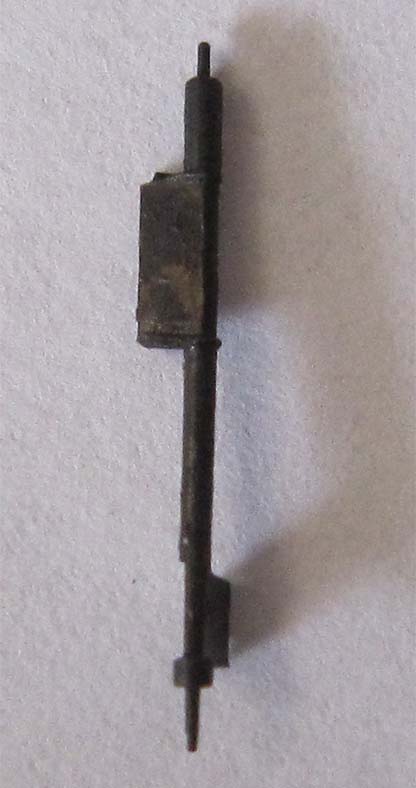
The next step is to harden and temper the part. This is generally the most delicate moment in the work. Here you need experience. When hardening, the workpiece must not be deformed, cracked or even broken. Surfaces can oxidize and burn out, which causes loss of metal. When tempering, it is about a few degrees, and sometimes a few seconds. It is necessary visually to determine the proportions of the detail: mass, length, thickness and how quickly it took a straw-yellow color. Tempering the details, as well as hardening must really work at the first time.
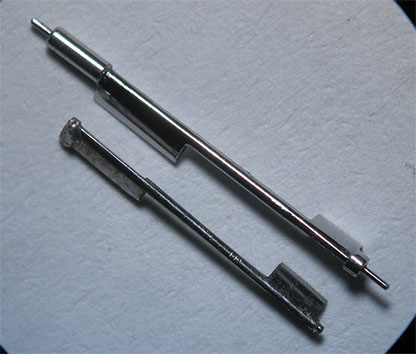
The next 10 hours I worked with pallets to give them the right shape. It is best to grind the pallets when the balance axis is clamped in the lathe. Then the surfaces of the pallets I smoothly polished with degusite. The shaft between the pallets I have turned on the lathe. Pivots are rolled and rounded it heels.
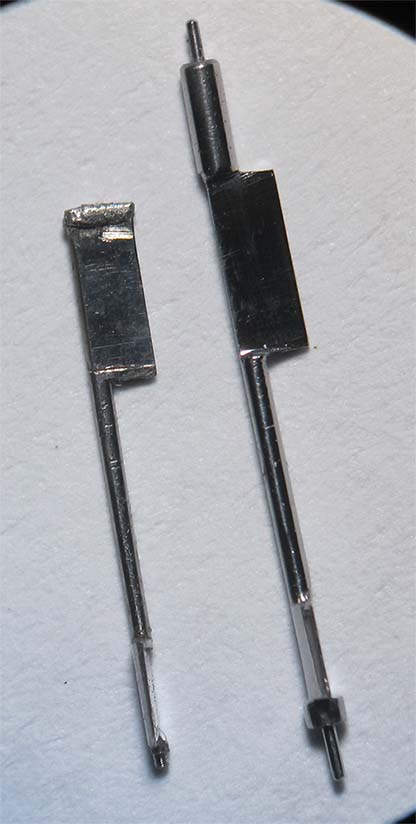
Now you can insert the balance axis and check the length. At first I reduced the pallets a little. Since the final size is not known, it was necessary repeatedly undercutt a little bit, until the pallet began to slip off the track wheel not touching the teeth.
Work with balance and spiral
10 hours
After that, you can devote your attention to the balance. At first I carefully took off the spiral. Then the balance for the bushing I clamped in the lathe to center and straighten plane of the balance. I pressed out the brass bushing. And since the original is stained with tin, I made a new bushing.
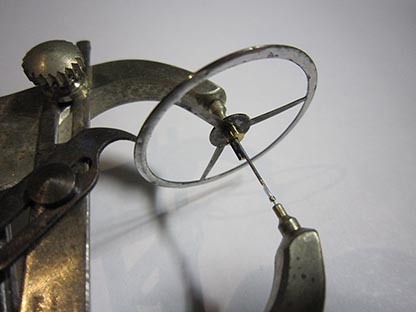
After the axle was pressed, I again checked the centrality. Now we need to balance the balance. For this, I applied tin to the rim of the balance, as the watchmaker did before me.
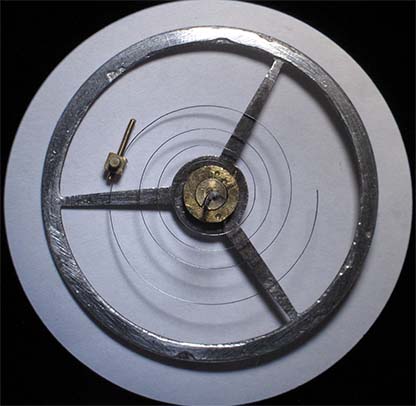
Spiral
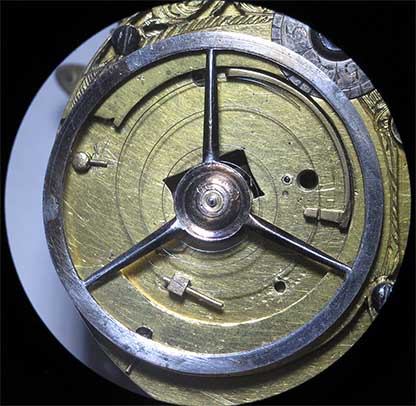
Manufacturing of the hook for the Gall chain
6 hours
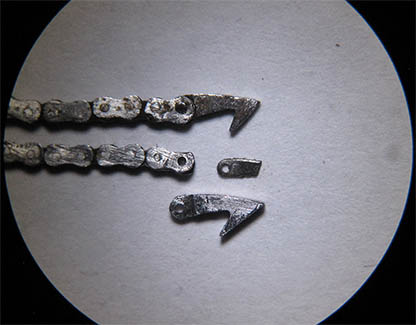
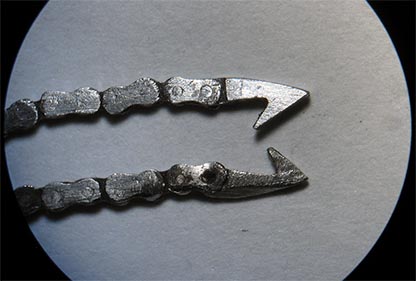
On one side of the Gall chain the hook was broken. I made it out of steel. Also I made a pin (Ø 0.32 mm × 0.6 mm) to rivet the hook. In the photo, the top hook is mine.
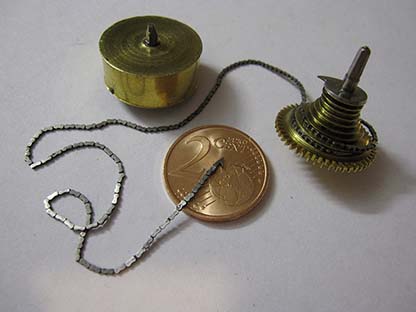
Manufacturing of the pawl for the fusee (fusée-chaîne).
4 hours
The pawl looked very worn out, I made a new one. The photo shows wear, a broken pin in diameter of about 0.55 mm, a length of about 0.85 mm.
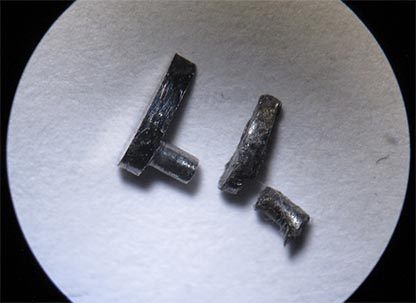
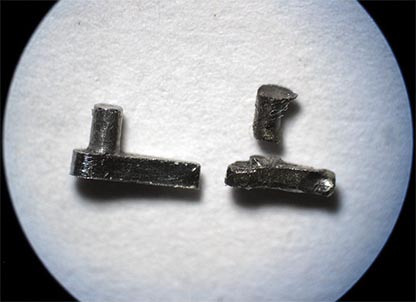
Left is the newly made pawl.
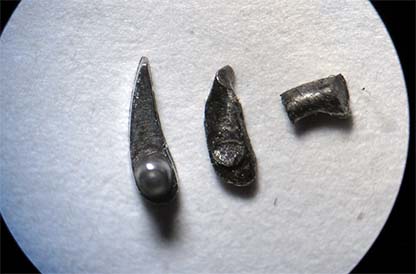
Manufacturing of the pinion
20 hours
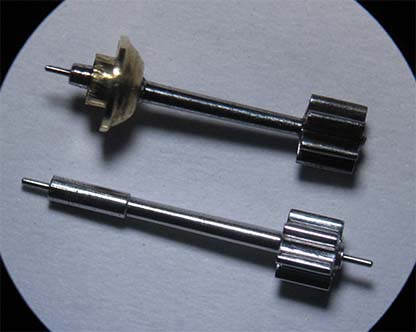
In the mechanism the pivot of one of the pinions is broken. It need to do a new pinion. Size of the pinion is Ø 2.7 mm, pivot Ø 0.29 mm. Pinion has 6 teeth. I cut the teeth with a tool of the 19th century.
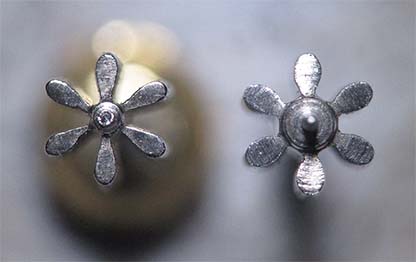
The brass bushing is also made new, a gear is original.
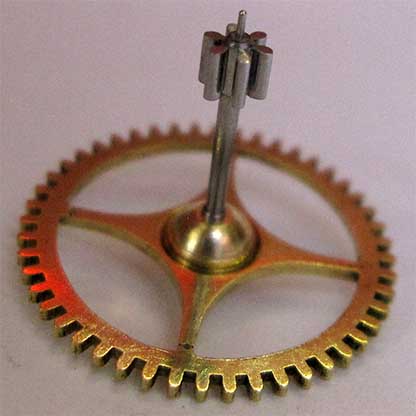
Manufacturing of the watch hands
The mechanism has not the watch hands, they are broken. Remained the part from a hand which is dressed on a Canon pinion. Visually, the material is similar to gold. The original design of the watch hands, like the material, is not known. I made watch hands from gold more or less suitable by style of that era and to a clock face with a case.
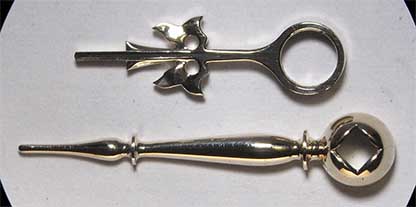
Sequence of manufacturing the minute hand:
30 hours
- I cast from gold a workpiece Ø 3.5 mm × 30 mm in an induction furnace.
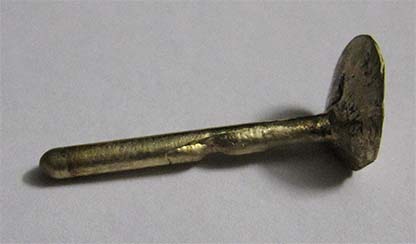
- I turned from the thickened side a ball Ø 4 mm on the machine, this is the part of the hand that will be put on the Canon pinion.
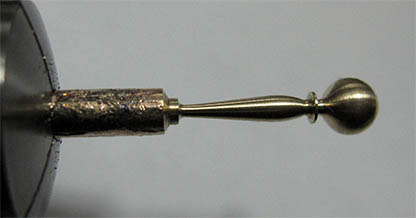
- I turned the clock hand at the form on the lathe, polished, cut off.
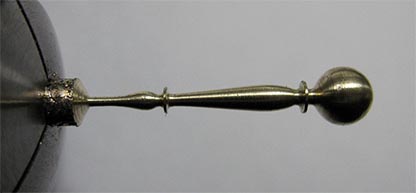
- I put the clock hand on the treibkitt, turned the surface of back side of the hand and drilled a hole Ø 1.5 mm in the ball.
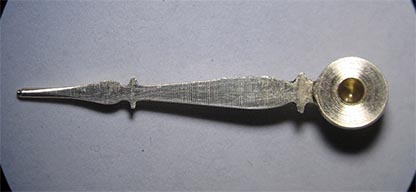
- I made a tetrahedral hole for the Canon pinion.
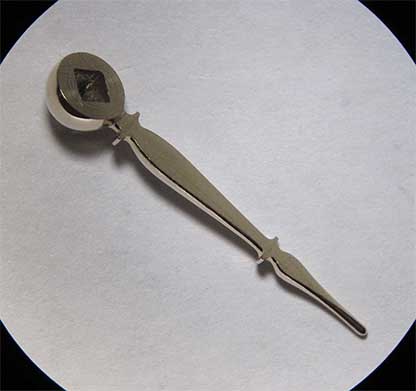
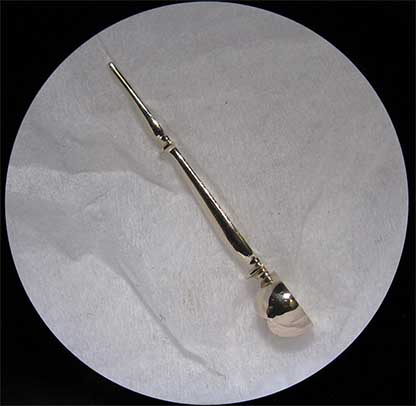
- Final polishing. Dimensions: 4,4 mm × 22 mm × 1,2 mm, 0,5 g.
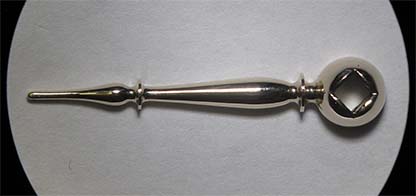
Sequence of manufacturing the hour hand:
20 hours
- I cast from gold a workpiece Ø 5 mm × 16 mm in an induction furnace.
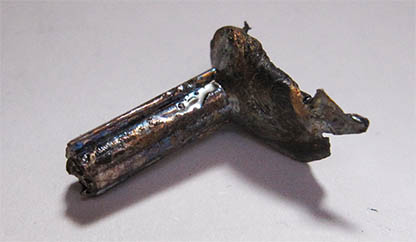
- Clamped the workpiece in a three jaws chuck, I turned it from both sides on the lathe and made cylinders on one side.
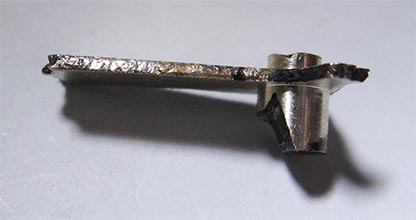
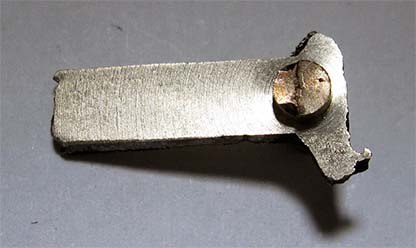
- Clamped the workpiece for a larger cylinder in the collet, I drilled holes Ø 0,7 mm and Ø 1.5 mm, milled the thinning and cylinder Ø 4,2 mm. Then I applied a symmetry line.
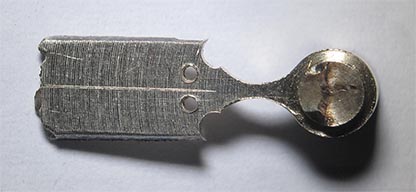
- Then, with feiles and a fretsaw, I made outlines of petals. I drilled a hole Ø 3,2 mm.
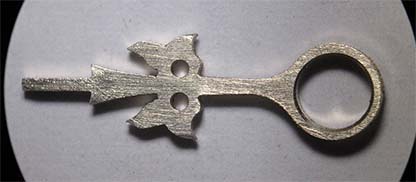
- I put the clock hand on the treibkitt. I engraved the relief on a surface of the hand.
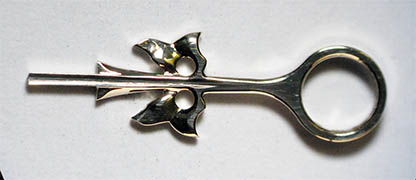
- Surface polished with degusite and chamfered. Final polishing. Dimensions: 0,7 mm ×4,8 mm ×15,8 mm, 0,2 g.
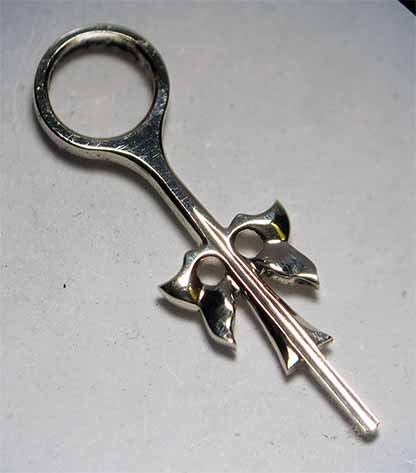
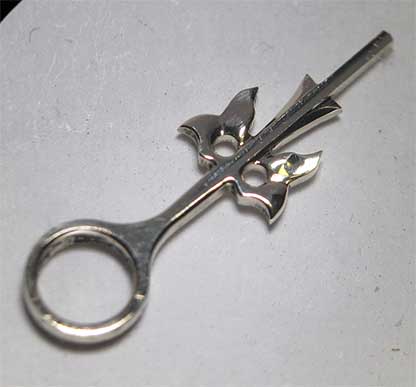
.
Work with the clock case
8 hours
Basically, the clock case is in a satisfactory condition. Some of the elements from the stone on brass plates were lost and puttyed. The wood is damaged and the fallen shellac in the place of fastening of the upper loop is also puttyed. But this clock is already 300 years old . In some places there are cracks on the shellac.




I carefully removed the dust and dirt and wiped the brass surfaces with turpentine.

